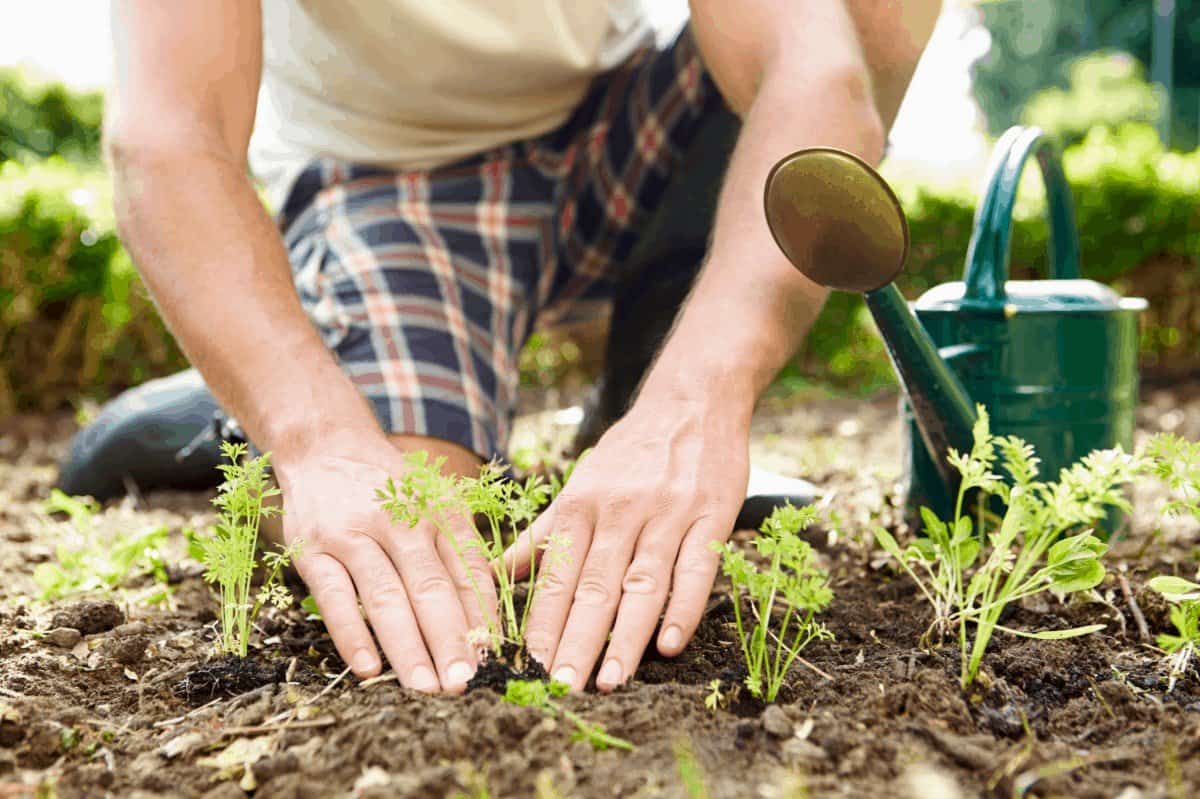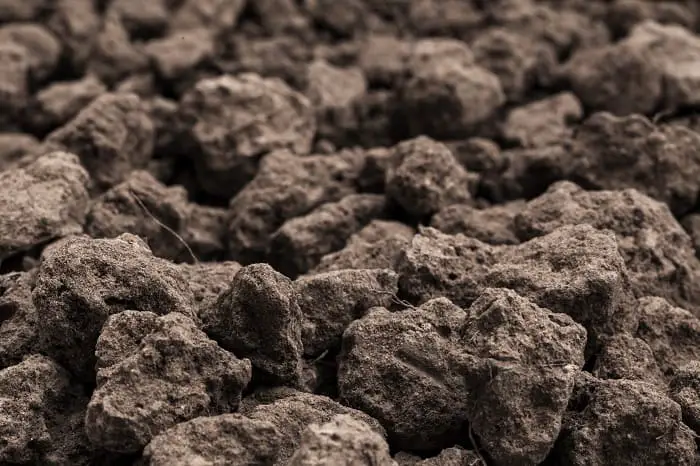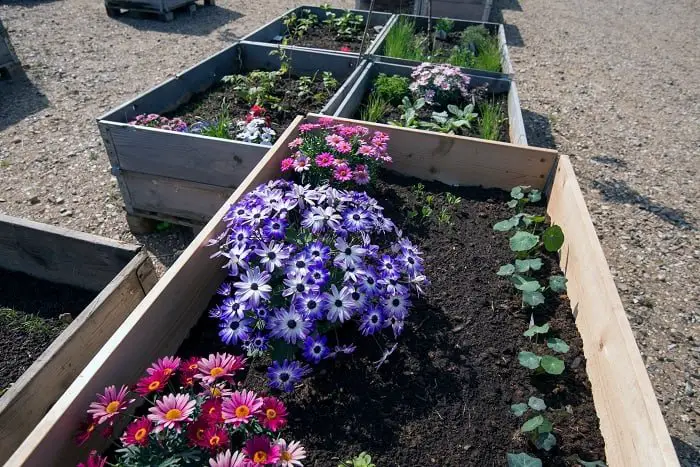Last Updated on February 22, 2023 by Tony Manhart
It would be great for gardeners if every yard consisted of nutrient-rich topsoil, but this is not reality. Many people instead have yards and gardens that are dominated by clay soil. But, you may wonder about how to break down clay soil fast? Clay soil is a type of earth composed primarily of minerals with little organic material. This makes it dense and difficult to grow plants, as the soil is heavy and does not have enough nutrition.
If you are struggling with a yard full of clay and still want to enjoy your flowers, shrubs, vegetables, and other plants, check out this guide on the ways you can break down clay soil. The process is quite simple and can be completed in as little as a day, making it worthwhile for anyone struggling with an abundance of clay.
How to Break Down Clay Soil Fast
Clay soil is difficult to work with for the majority of plants, but there are a couple that thrive once the earth has been broken down. After completing this process, consider investing in options like irises, baptisia, hostas (a personal favorite), coneflower, and yarrow. But first, you need to break the soil down and make room for healthy plants to thrive.
You will need several tools. The most important is a pitchfork in good condition so you can focus on aerating the soil. Afterward, you will need amendments like biochar and perlite. Finally, you might want to buy a little topsoil if you’re not interested in growing clay-based plants in your garden.
Aerate
Aeration is an essential component of lawn and garden maintenance. During aeration, you provide avenues for water and nutrients to enter the soil and reach the roots of the plants you grow. Using a pitchfork is a similar pointed instrument, you need to go around the area full of clay and poke holes about 1.5 in. deep. These holes should be spread out so water and decomposing organic material can get inside.
Aeration needs to be done when the soil is either completely wet or completely dry. Clay has poor drainage in general, and damp clay is difficult to work with. If you try to aerate while the ground is only damp, the soil will become a slushy mess, and aeration won’t work.
After holes are poked into the soil, consider turning over sections and loosening any hard clumps. You should churn any clay soil where you intend to plant so the roots have a better chance of absorbing moisture and nutrients. Once you finish basic aeration, you can focus on adding amendments to the lawn to help the clay soil break down and become more nutritious.
How to Break Down Clay Soil Fast: Use Amendments When Possible
Amendments in gardening are substances applied to soil to help it improve. Some of the most common amendments to use with clay include options like biochar and perlite. However, you can also use basic compost that has been made at home or purchased from a store.
Biochar, though, is highly effective. It is composed of partially burned and decomposed organic matter and can provide quick nutrition to a lawn that is struggling with mineral-heavy earth.
After you have chosen your amendments, you want to use them right after aerating the soil. Don’t wait. If you do, the clay can settle once more and you will have to repeat the process. Spread amendments evenly across the surface and then churn them, flipping over the clay and allowing the substances to get in the earth. You should plant right after for the best results.
As a final note, you should never apply amendments on top of unchurned clay soil and then fail to mix it. Only having nutrition on the upper layer means the amendments can be washed away by the rain or blown away by the wind. If you’re unsure of how to use any product, be sure to read the instructions on the packaging.
Are Plants Still Not Growing? Add Top Soil
If you have followed these steps to break down the clay soil in your yard and it is still not working, then it might be time to invest in topsoil. After aerating and using amendments, spread about an inch of topsoil of your choice where you want to plant. You can either leave this new soil directly on top of the churned clay, or you can mix it in with a pitchfork or shovel. As with all other steps, you should plant your flowers or shrubs as soon as you are done. This strengthens the chance of something growing in the garden.
There aren’t many top soils made specifically for clay gardens, so choose your favorite or whichever will work best for your plants of choice.
How to Break Down Clay Soil Fast: Time for a Raised Garden
If nothing appears to be working, it is time to build a raised garden. This tends to be the last option for individuals who live in an area full of clay because it stops the mineral-rich soil from interfering with the nutrition, texture, and drainage necessary for healthy plants.
To build a raised garden, you will need several 2×4’s, a long swatch of landscape fabric for the base, and traditional screws, nails, or wood glue. You should create an open-ended box in the shape you desire for a garden and then fill it with the soil of your choice. You can then plant freely in the raised garden without needing to touch the clay underneath. While this limits where you can grow, it also stops you from constantly needing to aerate, buy extra amendments, or mix topsoil.
Conclusion
As it turns out, there are many ways to improve clay soil and help it break down fast. The one-step gardeners can never forget is aerating the soil, which is essential for helping moisture and nutrients penetrate the thick layer of minerals. Even if you don’t have any luck growing with the clay, you can always turn to raised or layered gardens for a polished and professional look.
FAQ’s
FAQs
What breaks down hard clay soil?
Clay is an element that can be found in soil. The clay soil is often hard and difficult to work with. Clay soils contain water or air pockets, which can make them uneven and unstable.
What breaks down hard clay soil?
The main thing that breaks down the hard clay are roots of plants and animals that grow in the ground.
How long does gypsum take to break down clay soil?
Gypsum is a common component in soil. It makes it harder and more compact. In terms of physical properties, gypsum is denser than clay.
The rate at which gypsum breaks down hard clay soil depends greatly on factors such as the size and shape of the particles, the moisture content, the pH level of soil, etc. Gypsum starts to break down within its own weight range as soon as it is applied to hard clay soil because it starts to dissolve and release water molecules into the ground through hydration reactions with mineral ions in hard clay soil. After a certain period of time has passed, water molecules will have been released into the ground enough that gypsum becomes soluble in the remaining water content in clay soils and can continue to break down at a faster rate.
Does lime break up clay soil?
Lime is commonly used as a soil additive to improve the physical properties of hard clay soils.
In soil, lime reacts with organic matter in the soil. This reaction forms carbonates, which are weak acids that make the soil more porous and easier to work with.
Lime does not break up clay soil; however, it can improve the quality of the soil by breaking down some of the ingredients in hard clays.
What will loosen clay soil?
Clay soil is a type of soil found all over the world. It is often a mixture of clay and other minerals like silt, sand, gravel, or pebbles. Clay soil needs to be loosened up before it can be used for farming or construction purposes.
Some methods to loosen clay soil are to add organic matter like compost or manure and till it into the ground with a blade plow. These methods can be time-consuming and require much manual effort. There are also some machines that can loosen up clay soils for farmers, but these machines are not always available at farms that need the service.
Can you turn clay into soil?
Clay is a type of sedimentary rock that can be formed either by weathering and erosion or by deposition from the ground.
Clay soil has high porosity and water retention capacity. This makes it suitable for growing plants, fruits and vegetables in moderate climate. However, clay soil is poor in nutrients. If you want to fertilize your clay soil, you need to add a compost into it first before planting anything.
Should you aerate clay soil?
Clay soil has a tendency to crack and break. When this happens, the clay particles are swept away by the wind and rain, which can result in reduced productivity in your garden. This can also create drainage problems if the clay particles are not removed.
Some people will say that aerating your clay soil is unnecessary because it is a low-maintenance soil type. However, this could be dangerous if it isn't aerated often enough. If you have high-maintenance plants such as fruit trees, you must aerate your soil more often to allow water to penetrate deep into the ground and prevent root rot from occurring.
Tony Manhart is a passionate gardener who has been tending to gardens for over 20 years. He takes pride in creating beautiful outdoor spaces with plants, trees, and shrubs that can thrive in any environment. He loves to share his knowledge with others and has taught classes on gardening basics and advanced techniques. He is committed to sustainability, using natural and organic methods to create and maintain gardens. He also works with local organizations to create green spaces for communities. When he’s not gardening, Tony enjoys hiking, reading, and spending time with his family.




